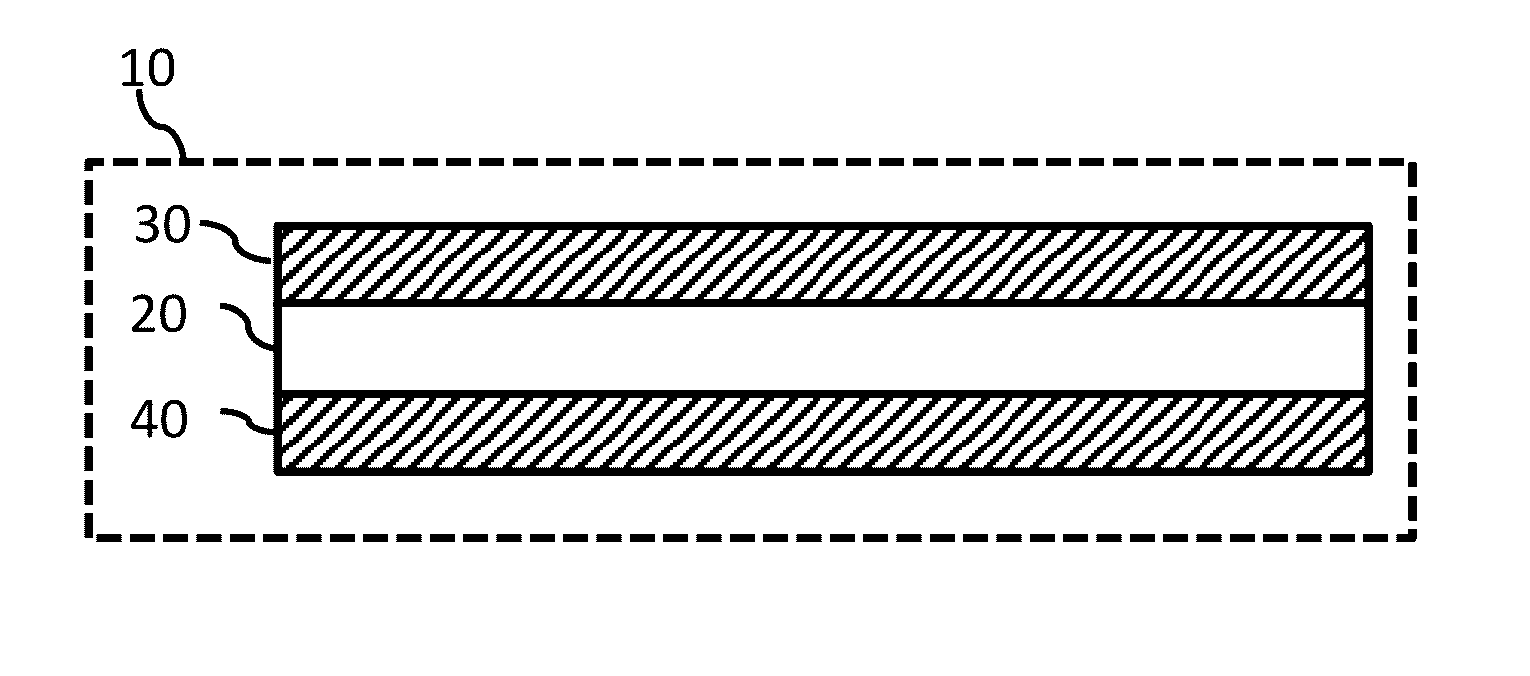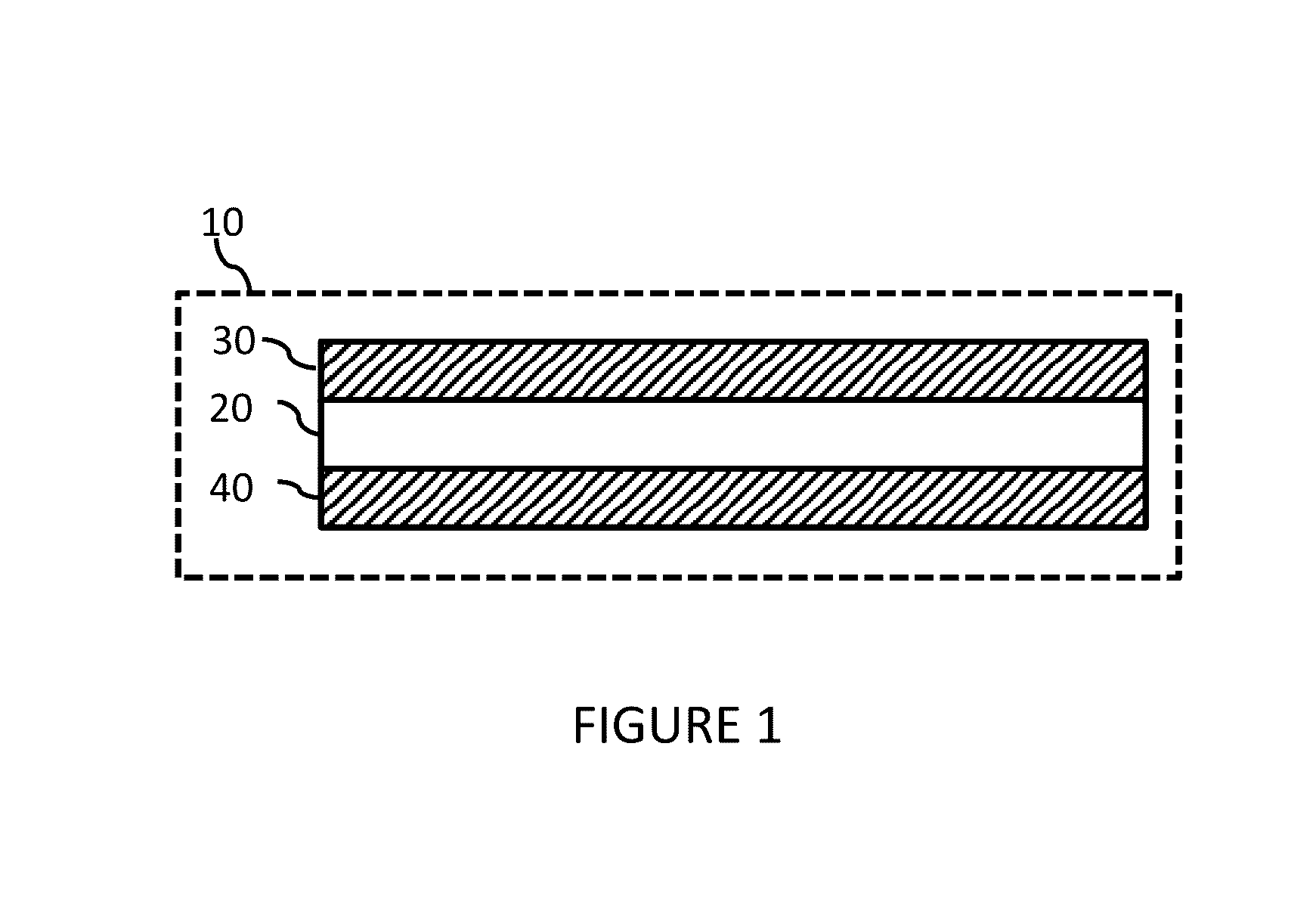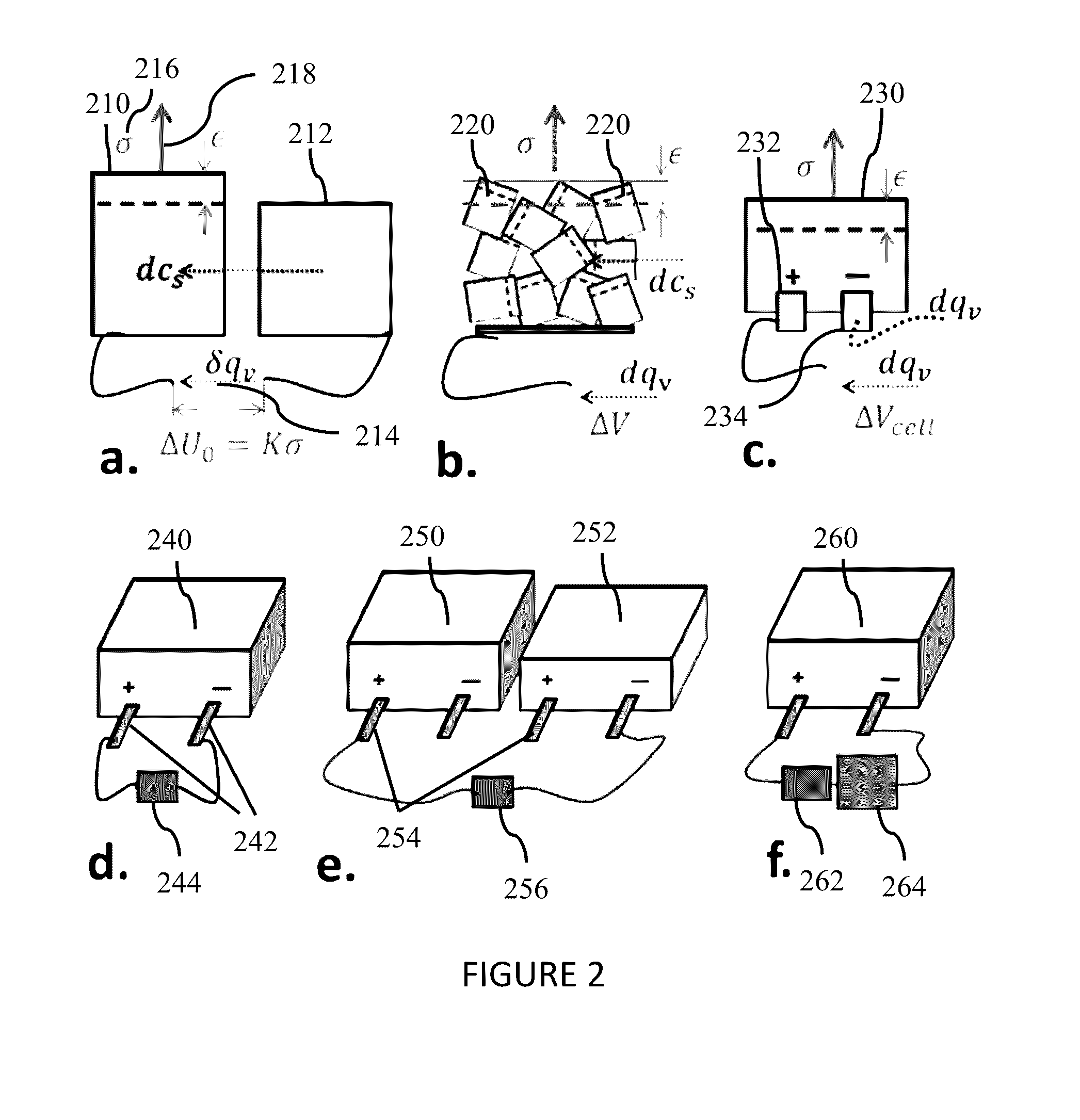Device for harvesting mechanical energy through a piezoelectrochemical effect
- Summary
- Abstract
- Description
- Claims
- Application Information
AI Technical Summary
Benefits of technology
Problems solved by technology
Method used
Image
Examples
Embodiment Construction
[0018]The term “piezoelectrochemical effect”, as used herein, is defined as the change in equilibrium potential due to an applied stress exhibited by a material. Although similar in practice to the piezoelectric effect, the piezoelectrochemical effect is a fundamentally different phenomenon that arises from a change in the thermodynamics of an electrochemical reaction due to applied stress. This piezoelectrochemical coupling has been studied in a few electrochemical systems, most notably in lithium-silicon alloying systems, lithium-graphite systems, and in graphite-sulfiric acid systems, and in full pouch cells. The reverse effect in which applied charge is used to generate mechanical work has been studied in work on electrochemical actuators for lithium-ion materials (HOPG, C / LCO, lithium metal) and for other graphite intercalation compounds.
[0019]The frequency limitations of more conventional mechanical energy harvesting devices can be overcome by creating devices that incorporate...
PUM
 Login to View More
Login to View More Abstract
Description
Claims
Application Information
 Login to View More
Login to View More - R&D Engineer
- R&D Manager
- IP Professional
- Industry Leading Data Capabilities
- Powerful AI technology
- Patent DNA Extraction
Browse by: Latest US Patents, China's latest patents, Technical Efficacy Thesaurus, Application Domain, Technology Topic, Popular Technical Reports.
© 2024 PatSnap. All rights reserved.Legal|Privacy policy|Modern Slavery Act Transparency Statement|Sitemap|About US| Contact US: help@patsnap.com










